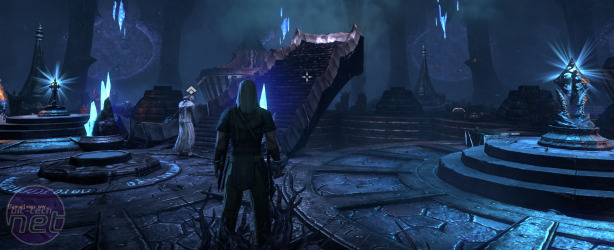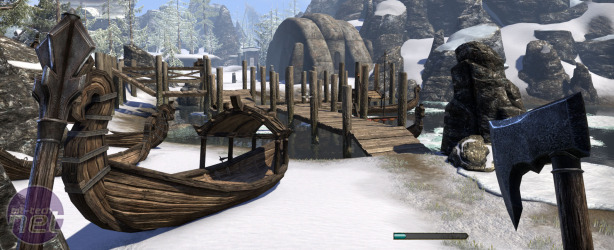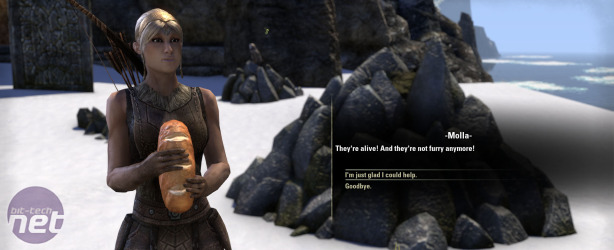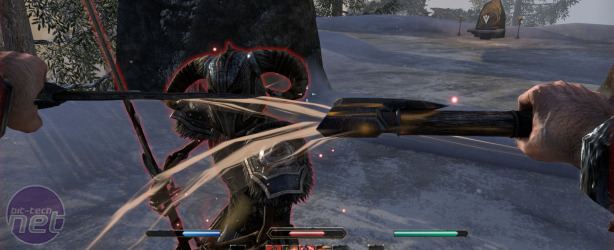
The Elder Scrolls Online Preview
Release Date: 04/04/2014 (June for consoles)Publisher: Bethesda Softworks
Developer: Zenimax Online Studios
Platforms: PC, Xbox One, PS4
In the summer of last year, when the early previews of the Elder Scrolls online circled like a Cliff Racer around the volcanic landscape of the Internet, the general response was one of disappointment. Here Bethesda Softworks had an opportunity to give fans of Skyrim and its predecessors something they had wanted for years; a true-blood Elder Scrolls game they could play with their friends. Unfortunately, what Zenimax Online appeared to have made was a World of Warcraft clone wearing a Tamriel skin. It looked nothing like an Elder Scrolls game, and by all accounts it didn't play very much like an Elder Scrolls game either.
Now only two months away from release, Bethesda have once again allowed the press access the enormous virtual world they have built, and frankly we expected to come away from Tamriel feeling the same sadness at a missed opportunity. Instead we've come away intrigued, and the tiniest bit optimistic. Although there are still some very obvious problems and a great many more uncertainties regarding Bethesda's MMO effort, there's also potential here that we haven't seen before.
The Elder Scrolls Online allows you to explore the entire continent of Tamriel via three different organisations, each of which has complete control of multiple provinces, and vies for dominance in Cyrodiil in the game's PvP component. For the purposes of this article we opted to join the Ebonheart Pact, an alliance of Nords, Dark Elves, Argonians and Khajiit. This gave us access to Skyrim, Morrowind and Cyrodiil, useful for comparison with previous Elder Scrolls titles.
And regarding that comparison, aesthetically at least TESO is now far more aligned with the games of Bethesda Softworks. The previously highly stylised presentation has been significantly toned down, and Zenimax has introduced a very welcome first-person mode. In addition, all the iconography, music and sound effects bear strong similarities to those used in Skyrim, further helping to blend TESO into the series' previously established theme.
This also makes it easier to focus on the world of Tamriel itself, and as MMO landscapes go it is mightily impressive. Most of our time was spent in Morrowind wandering through its curious mixture of mushroom forests, along its ashen plains and between its towering volcanoes oozing lava down their slopes. As with all the Elder Scrolls games, it's a world that beckons to be explored. There's almost always something interesting around the next corner, whether it's a new town or city, or something more unique and spectacular, like a pit of hissing, bubbling sulphur pools, or a statue of two fighting brothers that forms a huge archway over the landscape.
Unfortunately, it takes a long, long time for TESO to open up this world to you. All players begin as a spirit incarcerated in Coldharbour Prison, the supernatural domain of the god Molag Bal, and also the one place you can visit which has less colour than a Black hole. Obviously you escape, during the process of which it is revealed that you are the most special person in Tamriel, along with everyone else playing the game, and only you and all those other people can save Tamriel from Molag Bal's dastardly machinations.
It's a typically terrible Elder Scrolls opening, with uninspired writing read out by lobotomised actors. The difference between TESO and say, Skyrim, however is it goes on for about six hours. From Coldharbour prison you're transported to a starting island, in our case just off the coast of Skyrim, where you complete quests for people who are frequently stood right next to the objective, and mostly revolve around killing stuff or pressing E on three things. This culminates in a clash with another one of the game's three factions, before which you're transported to the mainland for another round of introductory quests before finally being let off the leash to explore a bit.
Even then it takes a while for the game to offer any tangible sense of freedom, as the game's Elder Scrolls bits clearly chafe against its new MMO trousers. The different areas are designed around certain level specifications, meaning there's a relatively strict path to follow, so the ability to go where you like and do as you please - seen in Skyrim and its predecessors - is denied to you. This isn't a crippling issue, because these areas eventually expand enough that the sense of exploration isn't diminished, but "eventually" is definitely the operative word.

MSI MPG Velox 100R Chassis Review
October 14 2021 | 15:04













Want to comment? Please log in.